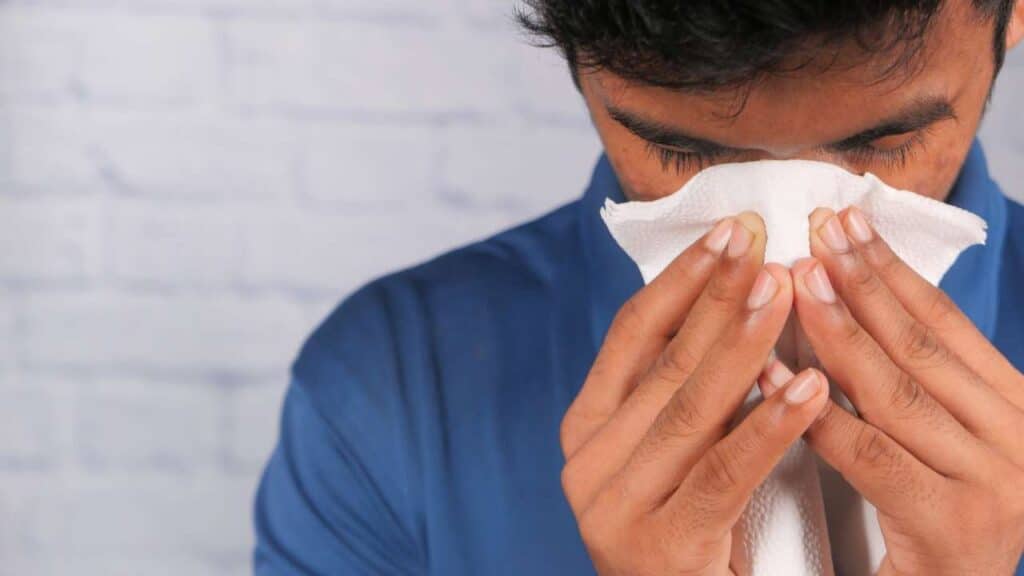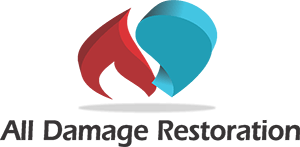
Mold allergy is a common yet often overlooked health concern in many households. Understanding the intricacies of Mold Allergy is essential not only for maintaining good health but also for ensuring a safe living environment. This blog aims to delve into the world of mold allergies, their symptoms, and the crucial steps needed to mitigate their impact. Additionally, we’ll explore how All Damage Restoration’s services can play a pivotal role in preventing and addressing mold-related issues in your home.
What is Mold Allergy?
Recognizing the Fungi Behind the Allergy
Mold is a type of fungus that thrives in moist environments. Common household molds include Alternaria, Aspergillus, Cladosporium, and Penicillium. These molds release spores into the air, which can trigger allergic reactions in sensitive individuals.
Symptoms of Mold Allergy
Symptoms can range from mild to severe and often resemble those of other allergies. They include sneezing, runny nose, itchy eyes, and in more severe cases, asthma attacks. Understanding these symptoms is the first step in addressing Mold Allergy.
Diagnosis and Treatment
How Do Doctors Diagnose Mold Allergy?
Medical professionals diagnose mold allergies through skin tests or blood tests, which help identify specific mold spores causing the allergic reactions.
Treatments for Mold Allergy
The primary treatment involves avoiding exposure to mold. However, when exposure is unavoidable, medications such as antihistamines and nasal corticosteroids can help manage the symptoms.
Prevention Strategies
Tips to Prevent an Allergic Reaction to Mold
Mold allergies can significantly impact your health and quality of life. Preventing exposure to mold is key to managing Mold Allergy symptoms. Here are some detailed strategies to minimize your risk:
Maintain Optimal Indoor Humidity
– Control Humidity Levels: Keep indoor humidity below 50% to inhibit mold growth. Use dehumidifiers and air conditioners, especially in hot, humid climates.
– Regularly Monitor Humidity: Use a hygrometer to check humidity levels in different areas of your home.
Enhance Ventilation
– Improve Air Circulation: Ensure adequate ventilation in high-moisture areas like kitchens, bathrooms, and laundry rooms. Use exhaust fans to reduce moisture.
– Open Windows: Whenever weather permits, open windows to allow fresh air to circulate and reduce indoor humidity.
Promptly Address Water Leaks and Spills
– Quick Response to Leaks: Fix leaks in pipes, roofs, and windows as soon as they are detected to prevent moisture accumulation.
– Immediate Cleanup: Thoroughly clean and dry any areas of water spillage within 24 to 48 hours to prevent mold growth.
Regular Cleaning and Maintenance
– Clean Mold-Prone Areas: Regularly clean bathrooms, kitchens, and other mold-prone areas using mold-inhibiting solutions.
– Check and Clean HVAC Systems: Regularly inspect and clean HVAC systems and replace filters to prevent mold spores from spreading through the air.
Safe and Effective Mold Removal
– Professional Mold Removal Services: For existing mold problems, especially large infestations, consider hiring professional mold removal services. They have the expertise and equipment to safely and effectively remove mold.
– DIY with Caution: If tackling small areas of mold yourself, wear protective gear like gloves and masks to minimize exposure to mold spores.
Landscaping and Exterior Maintenance
– Manage Drainage: Ensure that the ground around your house slopes away to prevent water accumulation near the foundation.
– Clear Gutters and Downspouts: Keep gutters and downspouts clean to prevent water damage and mold growth on the exterior of your home.
Avoiding Mold Hotspots
– Be Cautious in Damp Environments: In naturally damp environments like basements or garages, be vigilant about controlling humidity and preventing mold buildup.
– Use Mold-Resistant Products: When renovating or repairing your home, choose mold-resistant products like drywall and paints, especially in moisture-prone areas.
Implementing these strategies can significantly reduce the risk of mold growth in your home, thereby helping manage and prevent Mold Allergy reactions. Remember, the key is to control moisture, as mold cannot grow without it. Regular home maintenance and vigilance are your best defenses against mold-related health issues.
The Role of Mold Removal Services
Professional mold removal services are crucial in effectively eliminating mold from your home, especially in areas where mold is difficult to detect or reach.
Protect Your Health from Mold Allergies
Understanding mold allergies is just the first step. Click to see how our comprehensive mold inspection can help mitigate these health risks.
All Damage Restoration: Your Ally Against Mold
Comprehensive Mold Inspection and Removal Services
All Damage Restoration offers specialized services in mold inspection, identification, and containment. Their expertise ensures that mold is not only removed but also prevented from recurring, safeguarding your home from the health risks associated with mold.
Why Choose Professional Services?
Opting for professional services ensures thorough removal and mitigation of mold. This is especially important as DIY methods might miss hidden mold or fail to address the underlying moisture problems, leading to recurrent mold issues.
Frequently Asked Questions
How Quickly Can Mold Allergies Develop After Exposure?
Mold allergies can develop quickly or over time, with symptoms sometimes appearing within hours of exposure or gradually worsening with prolonged exposure.
Are Certain Individuals More Prone to Mold Allergies?
Yes, individuals with respiratory conditions, allergies, or weakened immune systems, as well as children and the elderly, are more susceptible to mold allergies.
Can Mold Allergy Symptoms Occur Year-Round?
Mold allergy symptoms can occur throughout the year, as indoor mold growth isn’t usually affected by seasons. However, outdoor mold spores may peak during specific times of the year.
What Are the Signs of Mold in a House?
Signs of mold in a house include a musty smell, visible mold growth on walls or ceilings, and persistent health symptoms like coughing or itchy eyes.
Can Cleaning Mold Make Allergies Worse?
Yes, disturbing mold can release spores into the air, potentially worsening allergy symptoms. It’s recommended to seek professional help for mold removal.
Is It Possible to Completely Eliminate Mold from a House?
While it’s challenging to eliminate all mold spores, professional remediation can significantly reduce mold levels and prevent future growth.
How Effective Are Home Air Purifiers in Reducing Mold Allergies?
High-efficiency particulate air (HEPA) purifiers can be effective in filtering mold spores from indoor air, thereby reducing allergy symptoms.
Can Mold Grow Inside HVAC Systems?
Mold can grow in HVAC systems, especially in areas with moisture buildup. Regular maintenance is essential to prevent this.
What Are the Long-Term Effects of Untreated Mold Allergies?
Long-term exposure to mold without treatment can lead to chronic respiratory issues and potentially exacerbate other health conditions.
Should I Test for Mold If I Suspect an Allergy?
If you suspect a mold allergy, it’s advisable to first consult a healthcare professional. They may recommend a mold inspection in your home if mold-related allergies are suspected.
Recognizing and addressing Mold Allergy is crucial for a healthy living environment. With the right knowledge and professional help from All Damage Restoration, you can effectively manage and prevent mold in your home, ensuring the well-being of you and your loved ones.
For more information on mold inspection and removal, visit mold removal services.
